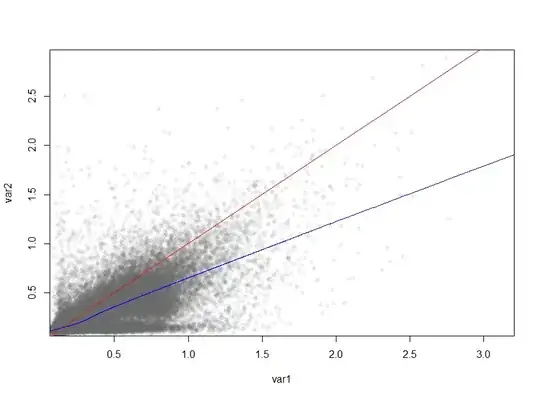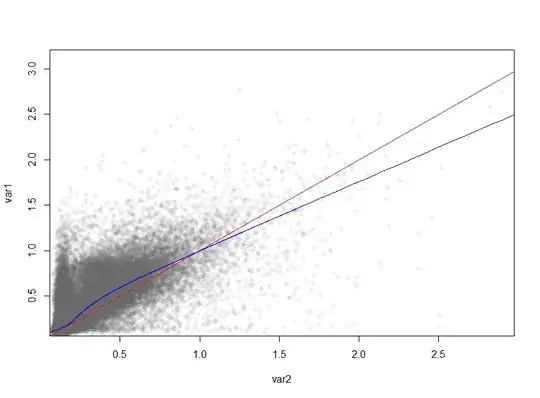I am generating plots of sd v sd of two groups and using the LOWESS curve to demonstrate whether there is variability in one group over the other. However it appears the my selection of which variable appears on which axis is having a large effect on the LOWESS curve. Why would this be?
plot(var1, var2, col =alpha(rgb(102,102,102,50,maxColorValue=255),0.1),pch=16, bg ='white', xaxs = "i", yaxs="i")
abline(0,1, col='red')
lines(lowess(var1,var2), col="blue")
plot(var2, var1, col =alpha(rgb(102,102,102,50,maxColorValue=255),0.1),pch=16, bg ='white', xaxs = "i", yaxs="i")
abline(0,1, col='red')
lines(lowess(var2,var1), col="blue")
Is there a reason for this? Is there are better method than the LOWESS curve to use?

